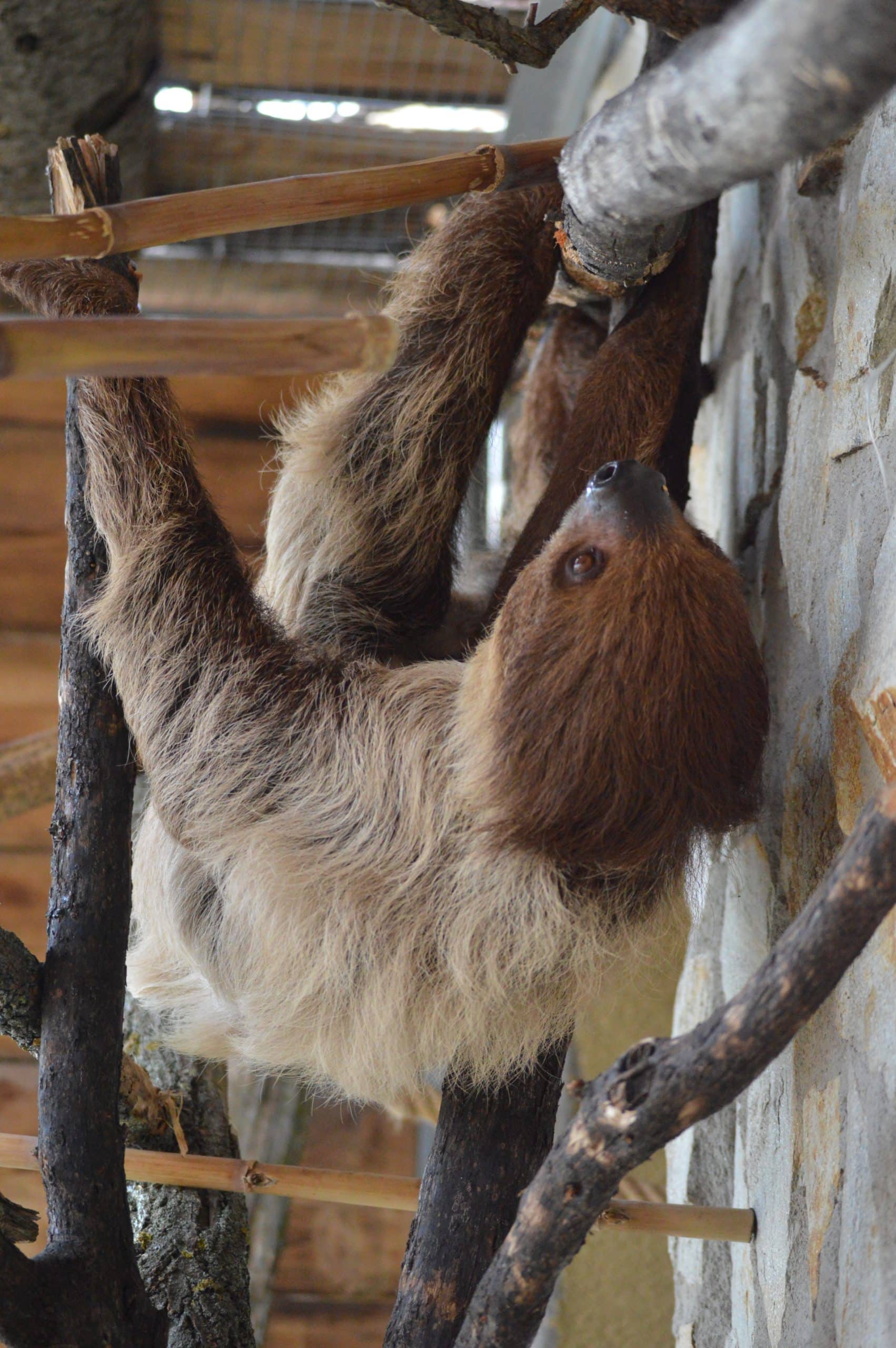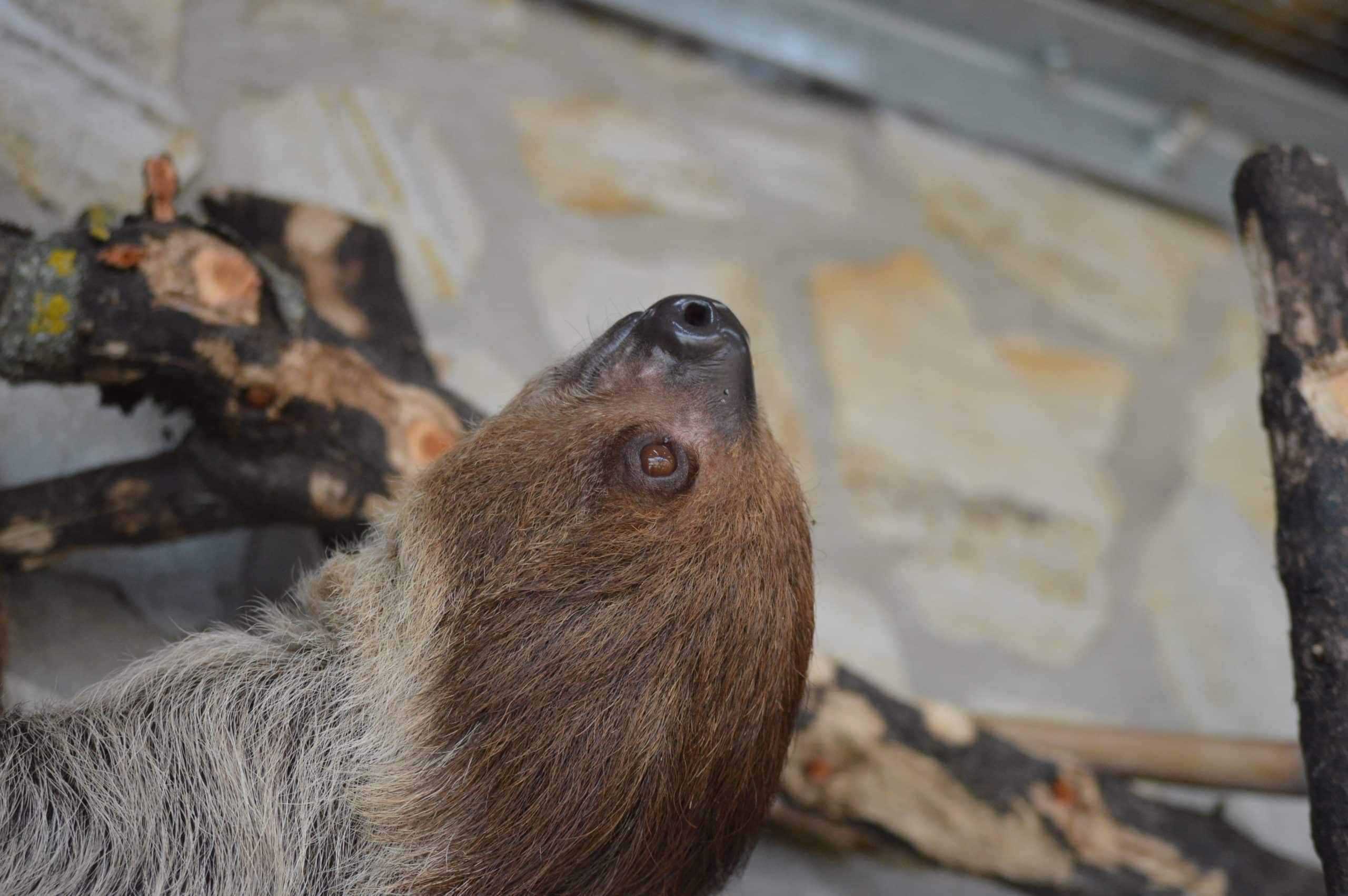They have long limbs with two (on the front limbs) and three (on the hind limbs) curved claws, which serve as hooks for hanging from trees, as well as a very dangerous weapon for defense. The grey-brown coat has a short fine undercoat, which is covered with a long coat of thick, densely growing hairs. Since they are not capable of a quick escape, their main protection against enemies is perfect covering coloring. Two types of algae live in their fur, which give the sloth motionlessly hanging in the treetops the appearance of a large girdle of branches. In dry weather, these algae are yellow. If it is humid, they turn blue-green, so the color of the sloth’s coat changes along with the color of the leaves in different seasons.
He spends most of his solitary life hanging upside down in treetops. Almost all their activity takes place in the tree. They eat, sleep, mate, raise young in the tree… He only goes to the ground very exceptionally – if he is forced to move to another tree or needs to defecate. On land, it becomes easy prey for ocelots and jaguars. They sleep very long and sleep for more than 22 hours. They are nocturnal animals. They sleep by putting their head on their chest, which makes them just a kind of hanging ball on a tree. They have a very slow digestion. It moves at a speed of 2 m per minute on the ground, 3 meters per minute in the trees.
He has a good sense of smell and touch, vision and hearing are worse.
The mother breastfeeds her young for about one month. They do not build any nest. She carries it for the next six months, with the cub clinging tightly to her chest.
Their hair grows in the opposite direction – from the belly to the back and downwards.
The sloth’s fur becomes home to various insects, e.g. butterflies. It empties roughly once every ten days, but once every thirty days was not a big exception. Then they have to come down to the ground and become an easy target for predators. More than half of sloths die outside their tree, their slowness has nothing to do with laziness – it’s a way to survive.
They also have a variable body temperature, which can fluctuate between 27 and 35 °C even during the day.
A female is said to “sprint” at a speed of 4 meters per minute when she hears the call of her young.
They are significantly better swimmers than walkers. They swim using their front limbs.
The two-toed sloth would not be endangered if tropical rainforests were not destroyed. However, it belongs to those species of animals that are immediately threatened by the loss of the environment.


